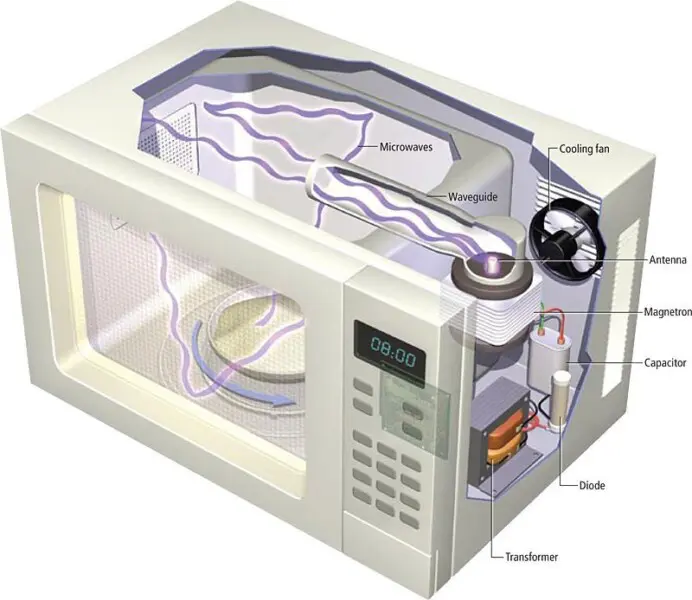Not many people realize this, but the microwave ovens use significantly less energy than their conventional counterparts: stoves and ovens. This article’s purpose is to highlight how microwaves accomplish these feats and why are they superior to ovens and stoves. Microwave Oven
Following is an accumulation of facts and questions based on consumer reports, survey and information literature provided by the manufacturers of electronic kitchen equipment.
How Do Microwaves Cook the food?
Let’s start with bare knuckle fact of how microwave ovens achieve this feat. The mechanism is pretty simple; the microwave ovens transfer the heat in the food by efficiently heating up the water in food. Most notably this energy transfer rate is 30-80 percent; noticeably higher than the meagre 12-14 percent of heat transfer on the conventional stove.
Additionally, the quality and type of cookware you use also effects and helps in determining the rate of heat transfer in the food. This concept also reflects true on what you are cooking and then the time can also be gauged via these factors. Some of you might argue, that water boiled on top of a conventional stove takes 25% less heat than a microwave oven, but experts from Ice Age argue that the properties of water are in stark contrast to frozen vegetables or serving lasagne.
How Much Energy can be saved with the use of microwave oven?
Studies reveal from research carried out by several Ivy League universities that cooking accounts for a major share in the average home’s energy use, so it is imperative to opt an intelligent solution to save money on the energy bills.
A rough comparison between appliances suggests that using a conventional oven for an hour every day for a month cost Rs500, while a microwave oven will end up costing just Rs100-150. That’s an impressive decrease in energy costs, which can make an impact on the annual electricity bills. That, however, is only one side of the story, there is plenty of room for you to save off on energy bills if you consider the electricity costs affiliated with cooking that influence the other ways your home uses electricity.
How can Microwave oven help me to save more energy?
Here is an interesting piece of information: Microwave ovens do not have a ridiculous heat signature, which makes it very easy on your air conditioning system during summers. On the contrary, we have conventional stoves and ovens, which as obvious by their function have to get scalding hot to cook food.
Moreover, in a microwave oven, a very specific area and item (s) involved facing an increase in temperature. However, stoves or top burners must retain a 204° C temperature to cook the food and later cool down after cooking is done. Makes you wonder where the heat goes and who has to deal with the increased heat signature in your kitchen. Yes, it is your air conditioner, which means it will consume more electricity. Consider a very hot day, and add the use of multiple stoves in your kitchen area. The result will be an accumulation of extra heat and humidity. At an approximate 177° C stoves pump wasted heat in your kitchen which lasts for hours, contributing in sustaining your home’s heat signature, which in the end will require your air conditioner’s to run for a longer period.
Some Other Benefits of Cooking in microwave ovens?
Microwave ovens do not produce (as many) indoor pollutants as other cooking methods, including conventional stoves or top burners. Indoor pollutants in newly built homes are very dangerous as they can accumulate and produce a poisonous cloud in one part of the home. It happens because newly built homes are better air-sealed and have a very limited exposure to outside air. Consequently, toxins like formaldehyde (HCHO), nitrogen dioxide (NO2), ultra-fine particles, carbon monoxide (CO), and other lung irritants can sustain in a newly built home for up to 24 hours.
Using kitchen exhaust fans and air purifiers have been shown to reduce these indoor pollutants effectively, but these methods don’t eliminate these contaminants entirely. Microwave ovens, meanwhile, emit “substantially lower” amounts of pollutants when cooking because they apply heat in a very controlled manner.
By using a microwave oven, you bypass the exposure to contaminants and also end up saving more energy since you don’t have to run exhaust fans and air purifiers for an extended period of time.









